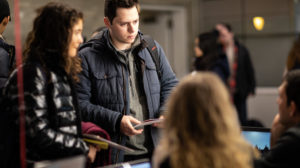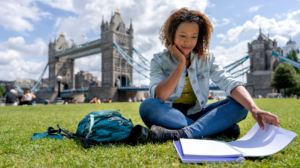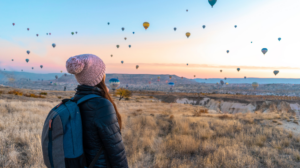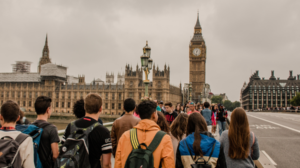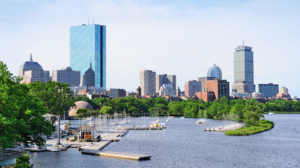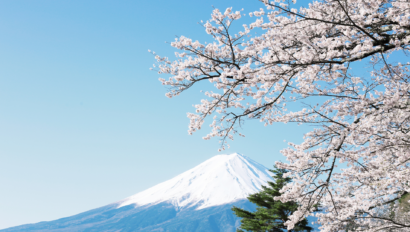Graffiti vs. Gentrification: competitors or mutualists?
Many things can break a country down. Inequality. Poverty. Oppression. South Africa, in particular, has experienced all of these traits and then some. It is only fitting that the country and its three largest cities would be divided and hostile in the wake of these factors. An unsung hero, however, has recently risen from the ashes of a broken, post-apartheid state: graffiti.
Graffiti has recently risen as a much-needed social unifier in the three largest cities in South Africa: Johannesburg, Durban, and Cape Town. While this art form does bring an inclusive element to these racially polarized cities, a less-visible competitor has risen up against it: gentrification. The premise of gentrification is to bring individuals back to an under-developed area; however, most of the time, these areas are home to the only affordable housing near the economic opportunities of the city center. “Rejuvenating” them then leads to the removal of an equitable community of divergent income-levels and economic classes. Where graffiti can fill the role of unifier, gentrification swiftly swept in to complete Newton’s third law as an equal, but opposite force. But is it really an opposite force? Must the private and public sector be in conflict, yet again? Can these two agents of change work together for the common good of improving commerce and equality? This remains to be seen.
Graffiti in South Africa began as a protest. A protest towards oppressive ideologies which ran rampant under the apartheid government in the late eighties. Artists would spray offices of oppression and would be harshly punished if caught. This turned into a movement and artists picked up the skills of razor-letters, bubble font, and more. These artists used “tagging”, or writing their street art name, in various places to pass judgement on a space. These places often stood for an institution of oppression in the community. For example, if you stroll through Newtown in Joburg today, you will see a plethora of tags surrounding the milling industry which some artists felt had inappropriate work conditions.
Once apartheid fell in 1994, however, graffiti took more malevolent forms to mark territories during periods of violence, and it pretty much ran rampant through the central business district without a purpose. That is, until the true intention of graffiti art was realized.
The present purpose of graffiti is antonymous to its historical, divisive uses: unification. Each year during Mandela week, the city of Johannesburg commissions numerous graffiti artists to paint the pillars in Market Square and express a masterpiece. These pieces can range from political commentaries, to personal stories by the artist, and even to life philosophies. This year, for instance, an artist by the nom de plume SEC created a display which touched on the power of interracial cooperation to strengthen the urban area. This piece used popular idioms, “same air” and “colour is fokol”, to describe that we are all the same and we must break down barriers in order to thrive. It depicted a black hand and a white hand touching and from this touch emanated a beam of bright light which shone and bounced through various prisms and finally was reflected above by a rainbow beam touching all. This represented the power of cooperation and understanding, as a simple gesture of sympathy can permeate all social levels and reflect the ideas of this rainbow nation.
These powerful masterpieces have been inspiring good and making more individuals feel welcome back in the heart of Joburg. These, tied with the new meaning for tagging have inspired many. Tagging is now used as a recognizable path in which local artists can connect with individuals in all communities across town and bring them together. Many artists also stand for a brand which supports local vendors in townships across South Africa. TAPZ, BIAS, and Chow Mien, for example, can be seen tagging structures all around Jozi and many building owners even give them express permission. Graffiti art is no longer even seen as a punishable offense within the social sphere. This makes the city feel more approachable, as if you already have a family member or friend leaving breadcrumbs throughout the district. Graffiti has made one of the most impressive transformations as an art form in South Africa, and as such its role as a social unifier seems to be incorruptible; however, not everything is as it first appears.
Due to the incredible success of this movement in Joburg, similar steps are being considered in Durban and Cape Town. For example, in areas such as District Six and Bo-Kaap, where forced removals and exile through gentrification have been common, graffiti could be a useful tool to bring previously excluded communities back to their homes! When attempting to bridge the rift between communities, with wealth disparities in particular, many tools can be used. From the public, community-perspective, graffiti seems to be a great avenue. From the private, commercial-perspective, gentrification is the more common route taken.
Gentrification, or as developers prefer: “urban-rejuvenation”, is the development of a previously disenfranchised area home to affordable housing for all income levels. This rejuvenating process begins through the installation of various commerce-based commodities: trendy bars, marketplaces, and, more often than not, choreographed art forms. At the Arts on Main exhibition in Johannesburg, for example, the private-residential developers, Propertuity in this case, staged sculptures, murals, and even (and most disturbingly) “graffiti”. In Durban and Cape Town, the private commercial development company, Urban Lime, carried out a similar path. Urban Lime actually funded Propertuity, with the one distinction being that in Durban and Cape Town the “rejuvenation projects” are purely commercial. The development business model in this market is the concept that the development never stops at the door; the development company will “improve the area” through security improvements and by attracting other developers which then create residences with extremely heightened prices.
The competition between graffiti and gentrification can be seen the clearest through the comparison of the district of Newtown in Joburg with Florida Road in Durban. Newtown was, at the height of rebellion against apartheid, an absolute “no-go zone”. Crime rates were extremely high and many previous community members fled the area. Many graffiti artists based out of Soweto, however, have taken a hands-on approach to solve this problem of fearful flight. Murals have been installed with streetlights under each bridge in the area. Busts of revolutionary activists’ heads have been placed to create a sense of accomplishment and community. Ultimately, art has welcomed residents back in mass with a new culturally trendy twist. Conversely on Florida Road, private development companies have paid to install art pieces without much inclusive substance. Basic murals have been created for the mere intent of attracting tourists with the promise of an Instagram-worthy backdrop. We can do better than this. We can attract tourism and the economic support it carries, as well as the authentic culture of the area. We can further the true purpose of Graffiti in South Africa, and prevent curated knock-offs from diluting its impact.
While the goal of increasing business and bringing individuals back to the city centers through development does have merit, and often attracts conservative praise for “job creation”, it is ultimately exclusive when enacted independently. This can be seen primarily through its role of removing the existing lower-income community and propagating the wealth disparity, by making the jobs created unavailable to the deserving, displaced community in actual need. Instead of this exclusionary, capitalist-based practice, local governments should regulate the practice of development in low-income areas. These regulations could include policies necessitating the inclusion of affordable housing accommodations, any job creation assisting the existing community, and other comprehensive practices… such as graffiti! Instead of commissioning an already established, well-off artist to create an inorganic display for the mere amusement of the easily-amused, developers could hire the local heroes of the community. Contribute to TAPZ by providing space and materials for not only a beautiful piece of art, but also a social commentary delving into the deeper reaches of societal ills. This would not only promote local artists, allow everyone to be informed on current inequalities, and retain much of the original community base and culture, but would also create a welcoming environment in which all individuals from all economic classes feel welcome.
This, I believe, is one optimistic, potential solution to the current conflict between “urban development” and grassroots-level art. However, as I wrap up my time here in South Africa and compare these two traveling themes, I do not wish by any means to promote the idea that this country is simply full of maladies. South Africa is an extremely resilient and inspiring country; they have only been a democratic nation for twenty-four years, and yet they have done more to repair the racist crimes against humanity during apartheid, than the United States has yet done since the abolishment of slavery. Over one hundred and sixty years ago. Of course, it is next to impossible to compare the “success” of two nations with different histories and cultures, but I do believe that they can each be demonstrations of both mistakes and potential solutions. That was ultimately my goal in expressing some of the challenges that SA faces today: to illuminate the issues and potential solutions, so that they may be considered for the strikingly similar ills in American society.
South Africa is truly the most beautiful place that I have ever had the honor to visit. It is filled with wholesome, genuine people, glorious nature, and a brilliantly durable soul. I plan to bring what I have learned here about the use of spatial planning to exclude individuals, to improve the conditions of inequality in the United States. By combining development and economic stimulation with community-supporting programs and affordable accommodations, we can build our cities in such a way that equitably leaves a space for each member of society, and tear down the systems of exclusion created in the pasts of both nations. Ultimately, I cannot wait to return to this gorgeous place and to bring my newly-opened eyes home to better my community to any degree that I am able!
Best,
Mackenna

